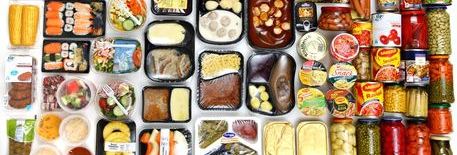Tackling the food waste challenge with technology
Article by Wayne Visser
Part of the Sustainable Innovation & Technology series for The Guardian.
Innovation in packaging and refrigeration can reduce waste – as can changes in behaviour.
The challenges of the 21st century will stretch our collective capacity for innovation like never before.
Take food security. Our mission, should we choose to accept it, is first to find 175-220m hectares of additional cropland by 2030; second, to increase total food production by about 70% by 2050, mostly through improving crop yields; and third, to achieve all this without damaging the land, poisoning ourselves or impairing the health of our finite and already fragile ecosystems.
The Food and Agricultural Organisation (FAO) estimates that meeting this challenge will require investment in developing countries’ agriculture of $9.2tn (£5.4tn) over the next 44 years – about $210bn (£123bn) a year (PDF) – from both private and public sources. Just under half of this amount will need to go into primary agriculture, and the rest into food processing, transportation, storage and other downstream activities. A priority will be finding ways to close the gaps between crop yields in developed and developing countries, which are around 40%, 75%, and 30-200% less in developing countries for wheat, rice and maize, respectively (PDF) – all while using fewer resources and less harmful substances.
This challenge is hard enough, but we also have to tackle the problem of 1.3bn tonnes of food wasted every year (PDF) – roughly a third of all food produced for human consumption. Fortunately, this is an area where technology can play a strong role, and where the economic, human and environmental benefits are compelling. An assessment of resource productivity opportunities between now and 2030 suggests that reducing food waste could return $252bn (£148bn) in savings, the third largest of all resource efficiency opportunities identified by a McKinsey study.
Reducing food waste through improved packaging
Although food waste is highest in Europe and North America (PDF), it is also a problem in developing regions like sub-Saharan Africa and south and south-east Asia.
According to the FAO, the total value of lost food is $4bn per year in Africa and $4.5bn a year in India, with up to 50% of fruit and vegetables ending up as waste. In developing countries including China and Vietnam, most food is lost through poor handling, storage and spoilage in distribution. It is estimated that 45% of rice in China and 80% in Vietnam (PDF) never make it to market for these reasons.
One of the most effective ways to reduce food waste is to improve packaging, for example by using Modified Atmosphere Packaging (Map) – a technology that substitutes the atmosphere inside a package with a protective gas mix, typically a combination of oxygen, carbon dioxide and nitrogen – to extend freshness.
This is a well-proven solution that calls for technology transfer rather than invention, which has been the approach of the Sustainable Product Innovation Project in Vietnam. Through the project, Map has been applied to over 1,000 small-scale farmers, resulting in reductions in post-harvest food waste from 30-40% to 15-20%.
Another simple packaging solution being promoted in developing countries is the International Rice Research Institute Super Bag. When properly sealed, the bag cuts oxygen levels from 21% to 5%, reducing live insects to fewer than one insect per kg of grain without using insecticides – often within 10 days of sealing. This extends the germination life of seeds from 6 to 12 months and controls insect grain pests (without using chemicals).
Improved storage and transportation
Besides improved packaging, a second way to reduce food loss and waste is through improved storage and transportation. A new report on creating a sustainable “cold chain” in the developing world estimates that about 25-50% of food wastage (PDF) could be eliminated with better, more climate friendly refrigeration. For example, Unilever has committed to using hydrocarbon (HC) refrigerants, which saved 40,000 tonnes of CO2 in 2013.
Waste into energy
Finally, even when food waste cannot be eliminated, its impacts can still be reduced, or even converted into benefits. For instance, animal by-products from slaughterhouses that are usually incinerated or disposed of in landfills can be treated by a new technology called the APRE process (PDF), which can treat 11 tonnes of dead animals every day, producing 4,000 metres cubed of bio-gas (60% of which is methane) and 44 tonnes of liquid fertiliser. The heat generated can be turned into electricity to be used in production or sold on.
As we can see, many technological solutions to agri-food waste already exist and only need to be more effectively shared and affordably adapted to local contexts. However, as always, technology is only part of the answer – something that Paris retailer Intermarché creatively, humorously and profitably demonstrates with its recent Inglorious Fruits and Vegetables campaign, which discounts and celebrates fresh food that does not comply with EU size and colour restrictions and would otherwise have been dumped.
The sustainability revolution is as much about changing perceptions, attitudes and behaviours – the software – as about changing the technology.
Download
[button size=”small” color=”blue” new_window=”false” link=”http://www.waynevisser.com/wp-content/uploads/2014/08/article_sustech2_wvisser.pdf”]Pdf[/button] Tackling the food waste challenge with technology (article)
Related websites
[button size=”small” color=”blue” new_window=”false” link=”http://www.waynevisser.com/books/the-quest-for-sustainable-business”]Link[/button] The Quest for Sustainable Business (book)
[button size=”small” color=”blue” new_window=”false” link=”http://www.csrinternational.org”]Link[/button] CSR International (website)
Cite this article
Visser, W. (2014) How to use technology to make our planet more sustainable, not less. The Guardian, 29 July 2014.


